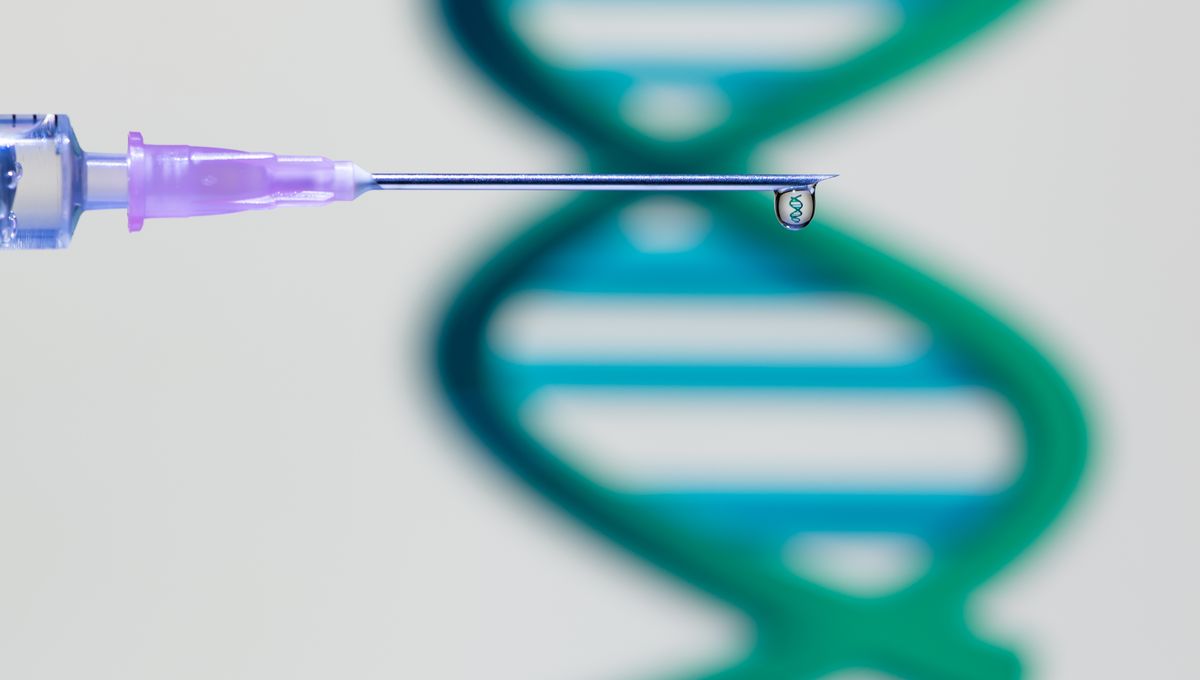
A new vaccine against SARS-CoV-2, the virus behind COVID-19, has been developed using an innovative DNA delivery system. Tests in mice have shown promising results so far, and the scientists behind it hope this could be the answer to developing vaccines against some of our trickier viral customers, such as flu and HIV.
The vaccine consists of a DNA particle that acts as a scaffold, holding on to lots of copies of an antigen from the virus you’re interested in preventing. In this way, the DNA “mimics” the structure of the virus.
Vaccines that use proteins, genetic material, or other small pieces of an infectious agent to evoke an immune response are called subunit vaccines, and they offer several advantages over more traditional types. One key advantage is that they cannot cause illness themselves, so they may be suitable even for people with compromised immune systems. Lots of these types of vaccines are in common use today, like the tetanus vaccine that uses the bacterial toxin rather than an attenuated or inactivated form of the bacterium itself.
Particulate vaccines are an extension of this, using a carrier molecule to help deliver the subunits into the body.
On the face of it, you might think that a DNA vaccine sounds less like this, and more like the mRNA vaccine technology that gave us the game-changing COVID-19 shots, altering the course of the pandemic and bagging their creators a Nobel Prize. These vaccines use mRNA to deliver what amounts to an instruction manual to the cells of the body, allowing the cells’ own machinery to start making copies of a viral antigen. The mRNA is naturally broken down in a few days, but by then there’s enough antigen around to stimulate an immune response.
The speedy introduction of mRNA vaccines against COVID-19 saved lives, but also led to some unfortunate misinformation about what these shots can do. One persistent myth has been that mRNA vaccines can alter our own DNA: this has been proven to be false. In fact, the mRNA doesn’t even make it into the nucleus where the DNA is stored.
These new DNA vaccines work in quite a different way, and are much more similar to the many subunit vaccines that are already part of standard immunization schedules, like the HPV and diphtheria vaccines.
How does this new DNA vaccine work?
The DNA in this new vaccine is essentially a vehicle to carry and display the viral proteins of interest to the body’s immune system. Previously, scientists have tried to use other proteins for this purpose, but they found that this was having unwanted side-effects.
“DNA, we found in this work, does not elicit antibodies that may distract away from the protein of interest,” explained co-senior author Mark Bathe, a professor at MIT, in a statement. “What you can imagine is that your B cells and immune system are being fully trained by that target antigen, and that’s what you want – for your immune system to be laser-focused on the antigen of interest.”
The fact that these vaccines target B cells, as Bathe says, is another point in their favor. B cells are the immune cells that create antibodies. They persist for much longer in the body than the T cells that are stimulated by other types of vaccines – sometimes for decades – so there’s the potential for much longer-lasting protection.
Bathe’s lab has been developing intricate scaffolds from synthetic DNA using a method that’s literally called DNA origami. By folding the DNA molecule and adding viral antigens at strategic locations, they can create structures that are easily recognized by B cells because they look a lot like normal viruses.
Up to now, the DNA scaffold vaccines have only been tested in mice, so it’s early days. They used the SARS-CoV-2 spike protein, and were able to demonstrate that the mice developed a strong immune response to the virus, but crucially not the DNA scaffold itself.
The team hopes that this approach could be the key to developing a broad-spectrum vaccine against SARS-CoV-2 variants, which could even cover related viruses like those that cause SARS and MERS. And their ambition doesn’t stop there.
“We’re interested in exploring whether we can teach the immune system to deliver higher levels of immunity against pathogens that resist conventional vaccine approaches, like flu, HIV, and SARS-CoV-2,” said co-senior author Daniel Lingwood, an associate professor at Harvard Medical School and principal investigator at the Ragon Institute.
“This idea of decoupling the response against the target antigen from the platform itself is a potentially powerful immunological trick that one can now bring to bear to help those immunological targeting decisions move in a direction that is more focused.”
The study is published in Nature Communications.
Source Link: Innovative New Vaccine Technology Uses DNA Particles That Pretend To Be Viruses